Without the miracle of masa harina, tortillas, tamales, and other Mexican dishes would not exist. Here is more about the wonders of this corn dough flour.
This post may include affiliate links. As an Amazon Associate I earn from qualifying purchases.
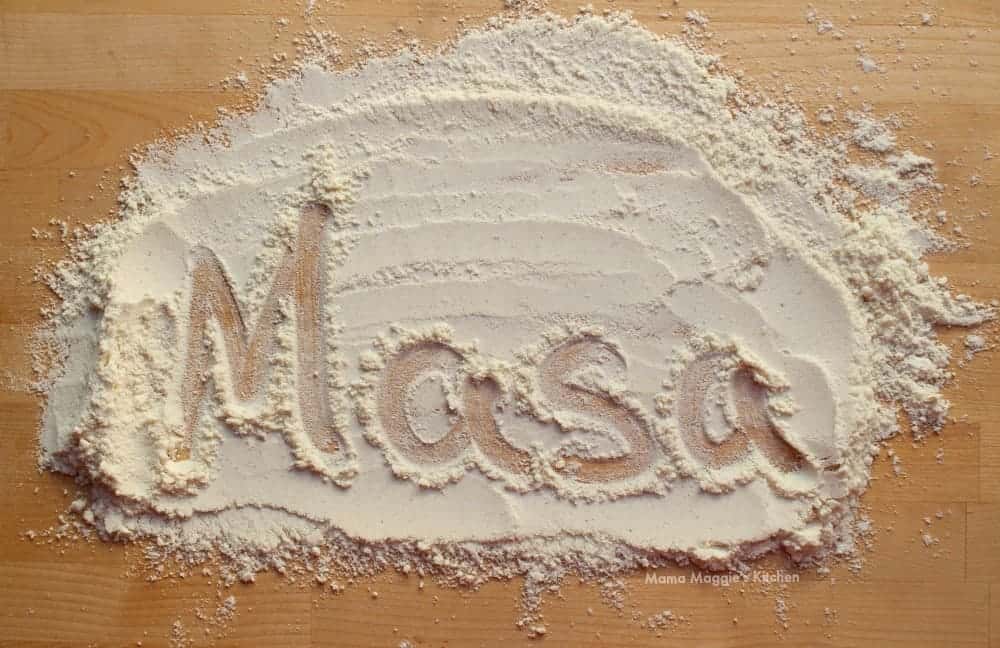
You see it on the store shelves and have heard about it in many of my recipes, but what is Masa Harina?
Masa Harina translated means “dough flour.” It’s used in Mexican cuisine to make Corn Tortillas, Gorditas, Tamales de Rajas con Queso, and other yummy dishes.
It’s not cornflour. It’s not cornmeal. Whaddaya know, it’s really dehydrated corn dough.
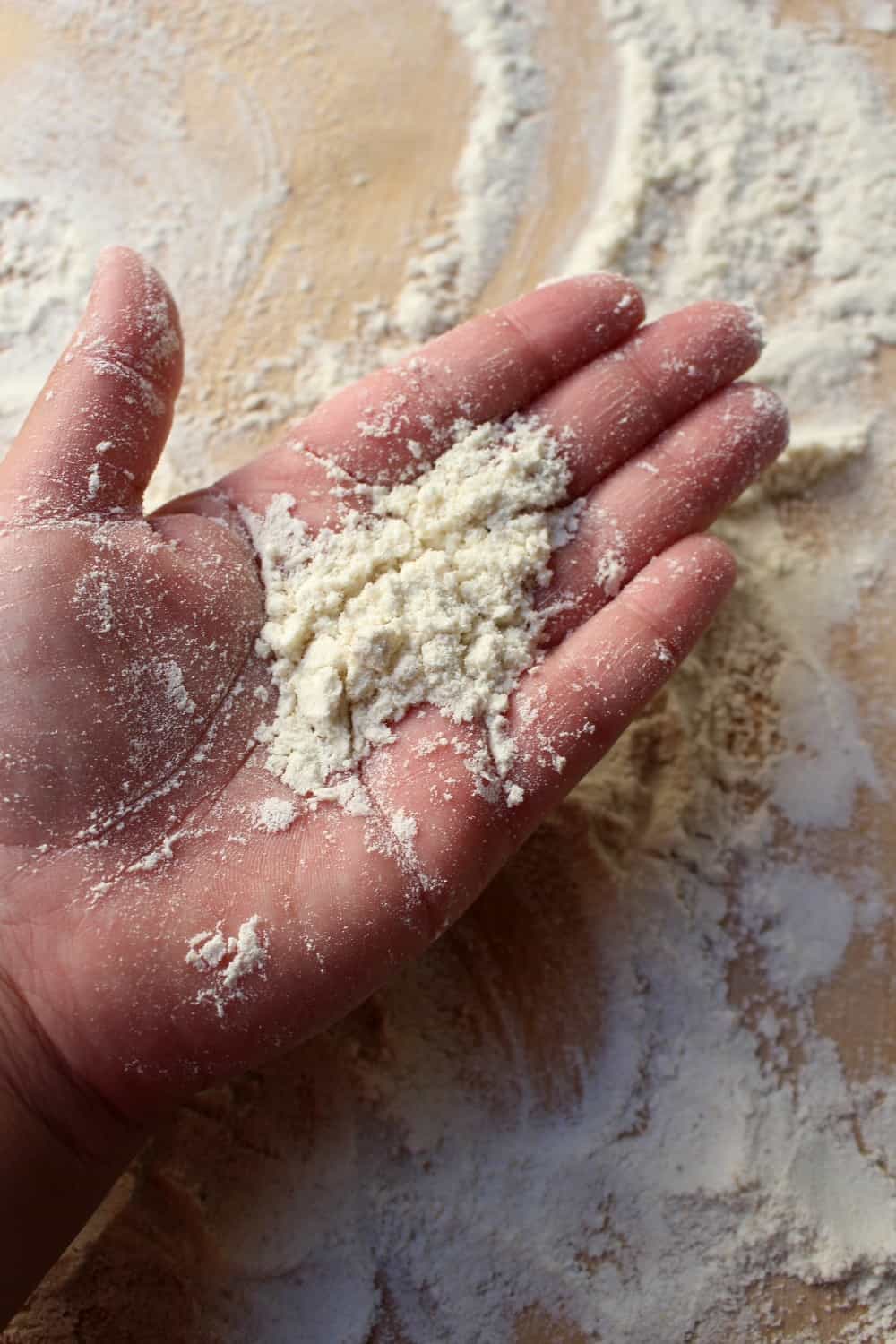
As mentioned in my more detailed blog post about hominy, dried corn is soaked in lime water (aka “pickling lime” or calcium carbonate). This highly alkaline solution gives masa harina that unique flavor.
After it is soaked and cooked, the corn has its outer skin removed and it is thoroughly rinsed and dried.
Once you have the final dry product, it is ground into flour with different degrees of fineness depending upon the need.
This process is called Nixtamalization.
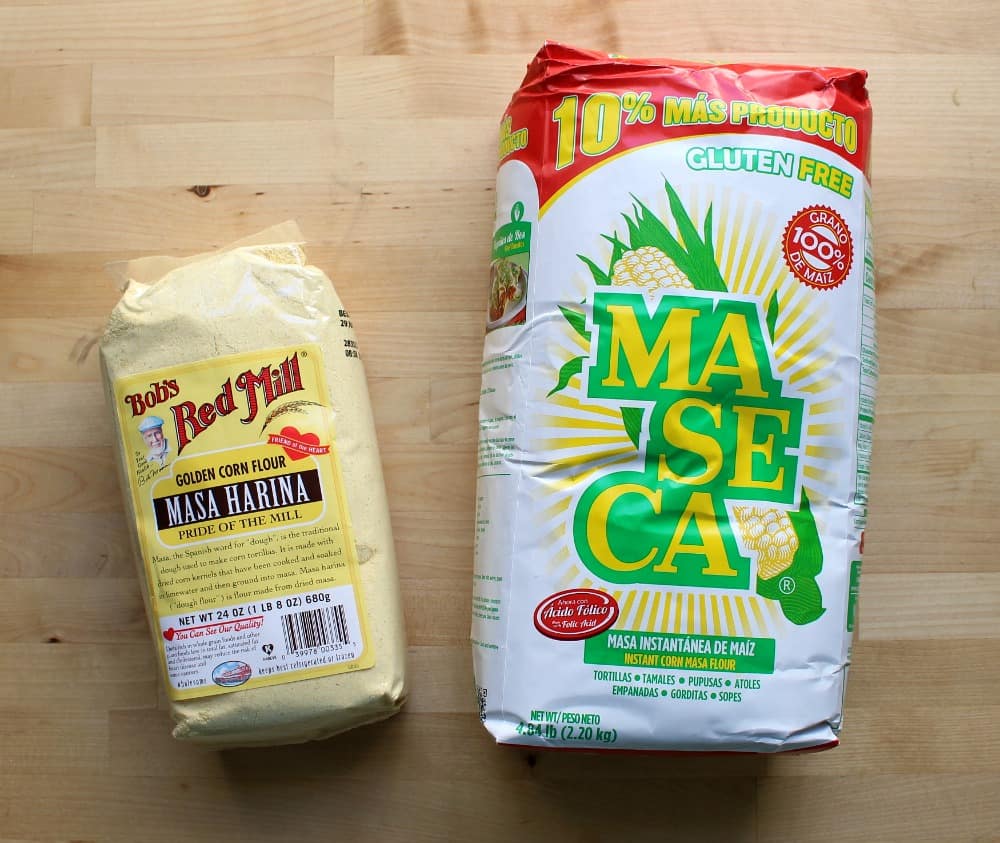
This magic corn dough flour comes in a variety of colors. You will find it as white, yellow, and blue.
White corn makes white masa harina. Yellow corn is used to create yellow masa harina. And, of course, blue corn makes blue masa harina.
The blue variety, however, can be pretty darn difficult to find. But both white and yellow varieties are far more popular and can be easily found.
It is the most essential ingredient when making Sopes, Tlacoyos, Jalapeno Cheese Tamales.
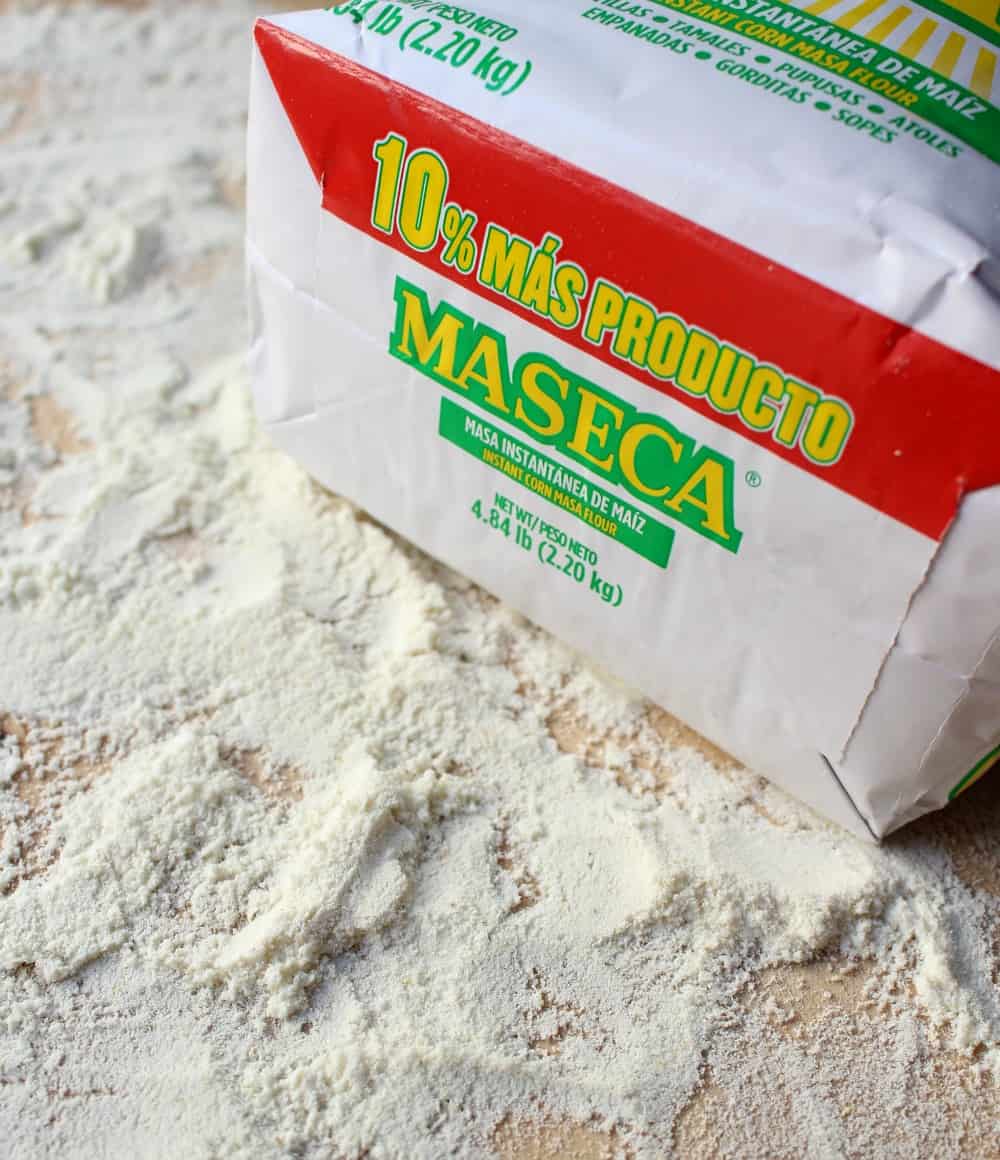
Maseca is probably the most common brand found for sale.
It’s the brand that most Mexicans use. But if you don’t live near a Mexican community or Latin grocery store, you can also buy Bob’s Red Mill online.
These days some big chain grocery stores and some health food stores now carry both brands as well.
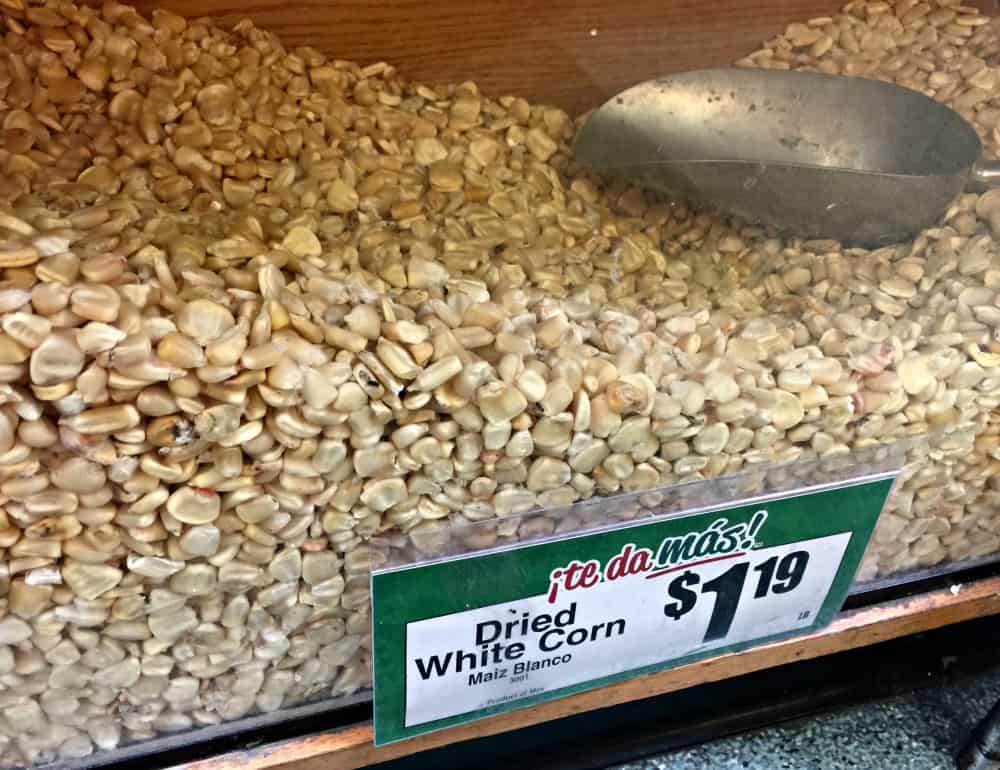
What is a good Substitute?
- To get that distinctive flavor, try grinding stale or dry corn tortillas in a food processor until you get a fine powder. Add salt and warm water until a dough forms.
- Ground hominy (either the dry or canned varieties). This is a great substitute for masa harina. Hominy has already had the outside skin removed. Only the soft interior remains.
- Ground Tortilla chips. Do you remember all of those crumbles of tortilla chips in the bottom of the bag? Gather them up and place them in a sealable container until you have enough to grind into a small dough of masa. Be sure the tortillas chips have been baked and not fried, or the taste will be slightly off.
Fun fact: My uncle owned a tortilleria in Durango, Mexico. He would wake up every morning Sunday-Sunday at the crack of dawn to grind the corn.
The tortilleria was also the go-to place to buy freshly made frijoles de la olla (or pinto beans). During the Christmas season, you could also get masa for tamales and champurrado.
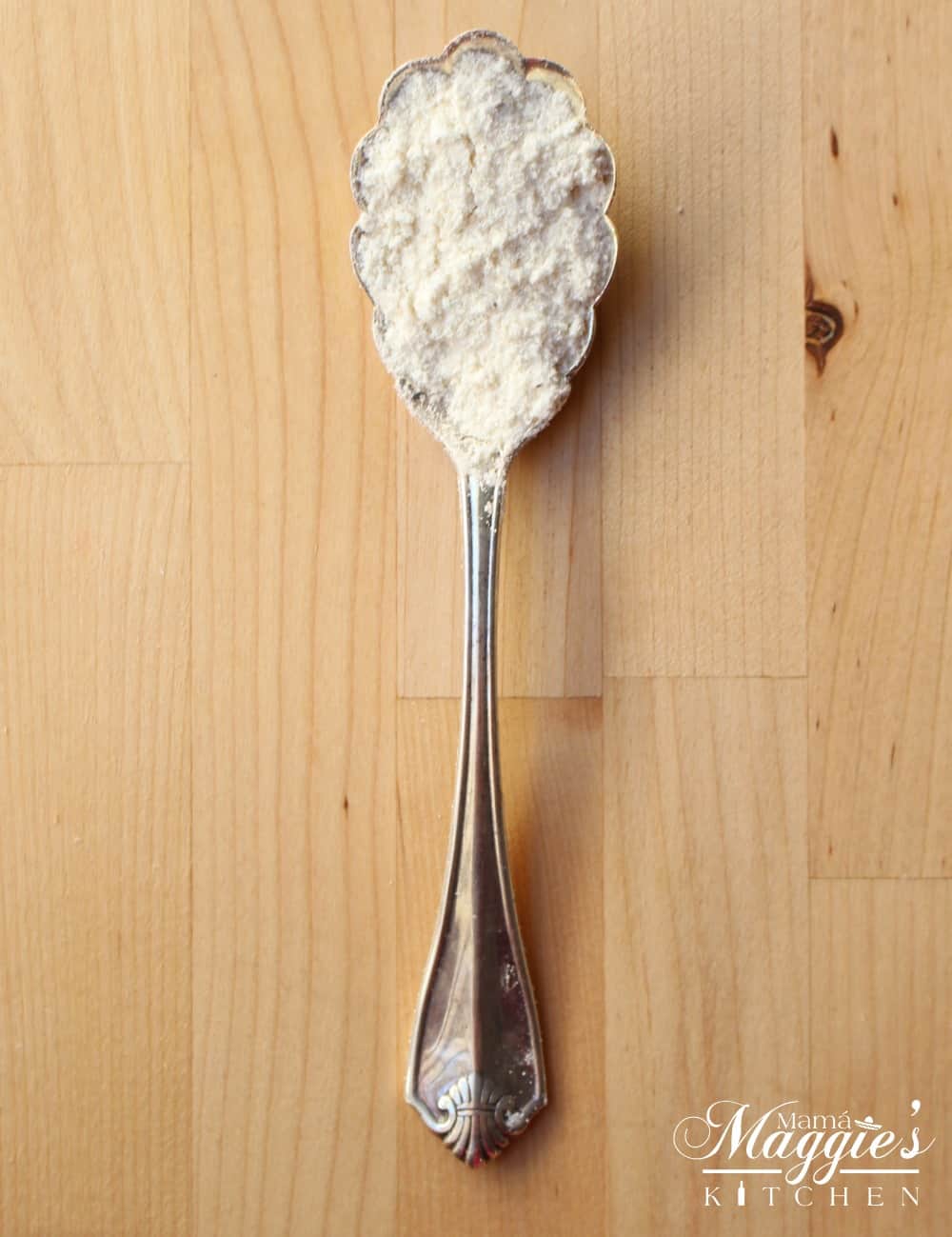
It’s not Cornmeal
Is masa harina the same as cornmeal? No.
- Masa Harina is ground maize corn that has been previously soaked in lime water.
- Cornmeal is never ever soaked in lime water.
- However, both are made from corn and both are therefore gluten-free.
Cornmeal is great for baking, but it will not make good tortillas. In fact, the tortillas will fall apart. And a broken tortilla just breaks your heart. Right?
The lime soaking process brings out the unique and distinct flavor that really differentiates masa harina from cornmeal.
Bonus: It releases nutrients like the B vitamin niacin providing far more nutrition than untreated corn.
Recipe Ideas:
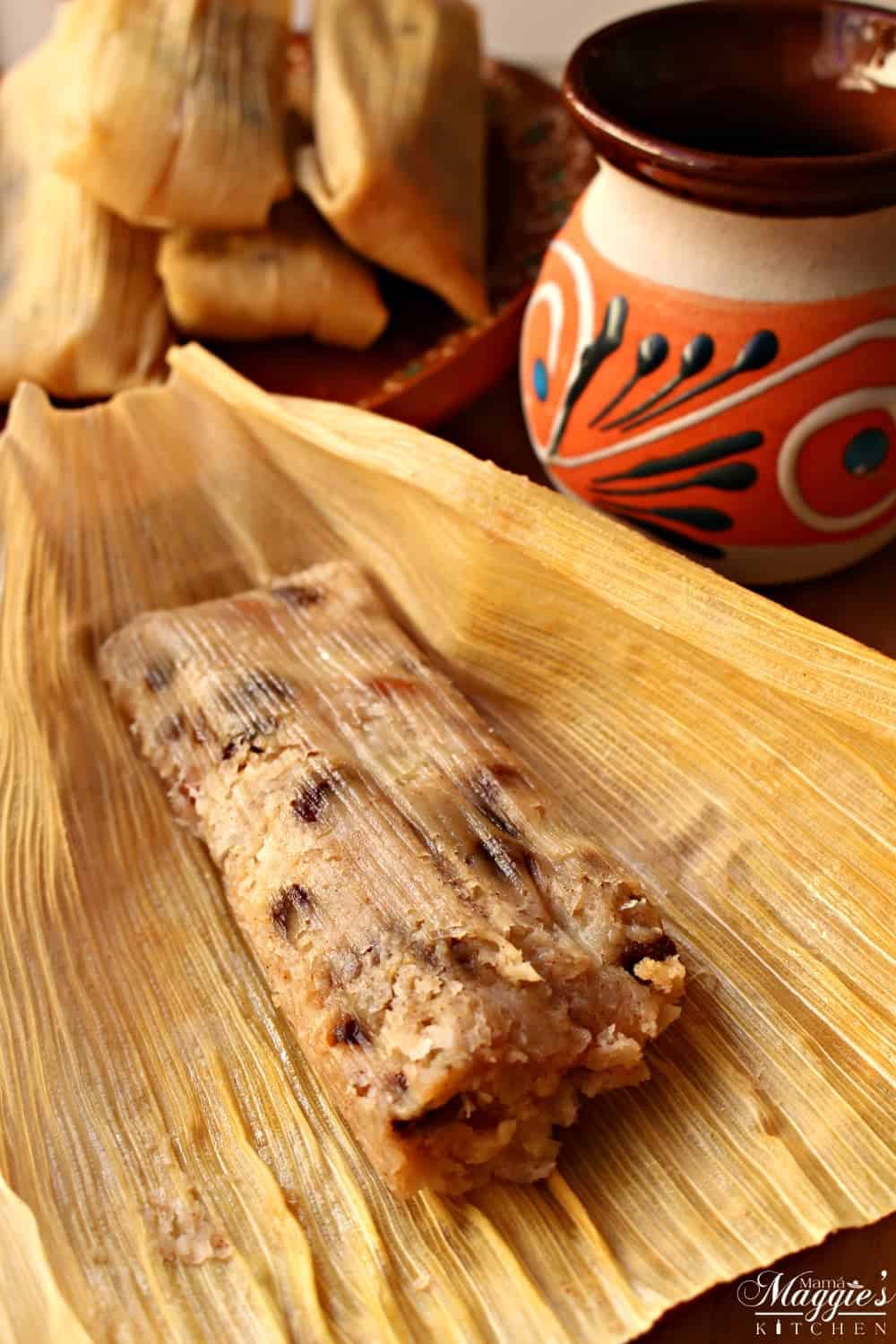
Tamales Dulces are perfect for the Christmas Season. Sweet and delicious and hard to resist.
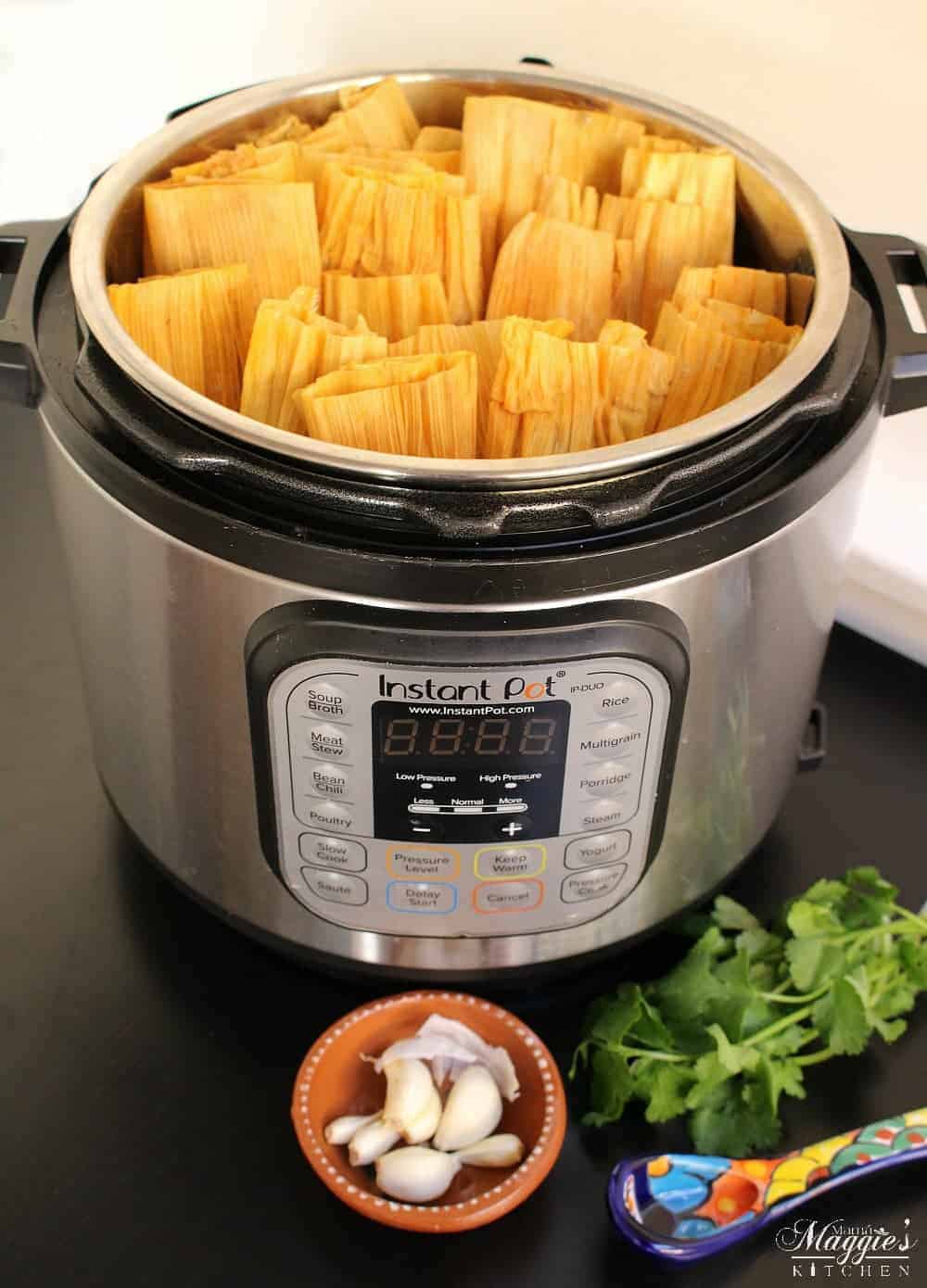
Make Instant Pot Pork Tamales in half the time as regular tamales. More time to enjoy a few tamales with friends and family.
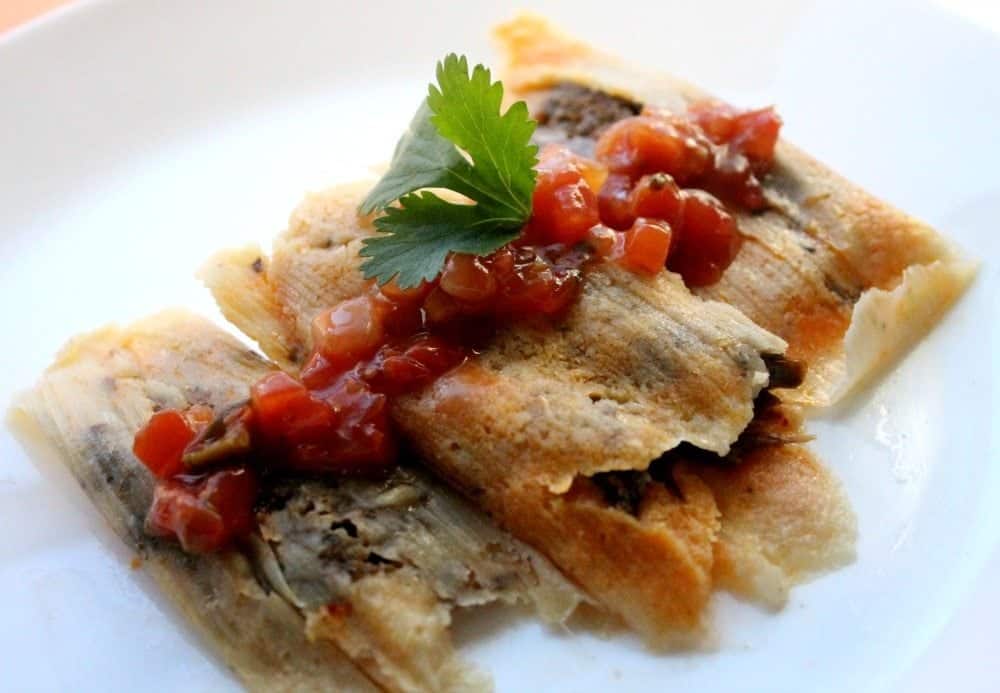
A bite out of one of these Beef Tamales will make your tastebuds sing. They are such a treat especially on special occasions.
Follow me on Facebook, Instagram, Pinterest, Twitter.

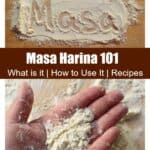

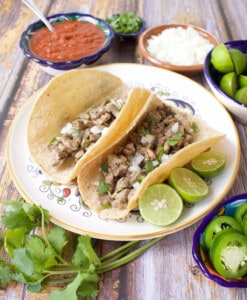
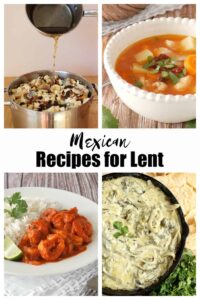
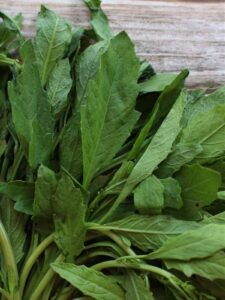
How many dozens this recipe make (more or less)? First time making my own masa!
Hi. You can make 2 cups using this masa for tamales recipe https://inmamamaggieskitchen.com/how-to-make-masa-for-tamales/
We like to try new recipes and are huge fans of Mexican inspired dishes. I’ll have to see if I can get Masa Harina around here and try some of your recipes.
I really enjoyed reading this post. I found it very helpful. I’ve always wanted to try making my own tortilla’s at home.
Ive heard of masa harina many times for different recipes but I never really knew what it was. This was helpful in explaining it all!
im not the most experienced cook but i love learning about new things 🙂 this was so interesting to read and thanks for sharing!
This is so interesting. I had no idea they were so different. I am going to be saving all my crubs and pieces from the tortilla bags now and give this a try!
I’ve never heard of this til now. It sure sounds delicious too. Now I really want to make tamales. They are so good and it’s been so long since I’ve had one.
Wow that looks delicious! My father and I used to eat tamales together and this looks so much like the ones we used to eat.
I had never heard of masa harina before but I am sure my husband and his mom know about it – I should ask them! Tamales Dulces seem absolutely delicious – I would love to try that over the holiday season.
A dehydrated corn dough.? This is the first time that I’ve heard of it. We do love Mexican food and that would be worth a try, for sure.
This is really interesting. I think I would prefer using this instead from now on. Way better than what I was using back then.
I used to make these awesome corn cakes with masa harina. I forgot all about them until this post. Now, I am going to have to pull up the recipe this weekend. And try out those insta pot tamales to go with it!
Oh my gosh. I love learning about cooking and this was a whole new adventure for me. Thank you for sharing your expertise.
I have never made my own tortillas, but now I think I’d like to try. Thank you for the great post explaining all of this.
I had no idea what this was before today. You learn something new every day. I need to try and make some tortillas.
I LOVE making my own tortillas! They taste so much better! I think I might try this recipe!
I’ve always wanted to make my own tortillas. When I was in Mexico last time. I loved watching the ladies make tortillas. Now I know what to use!